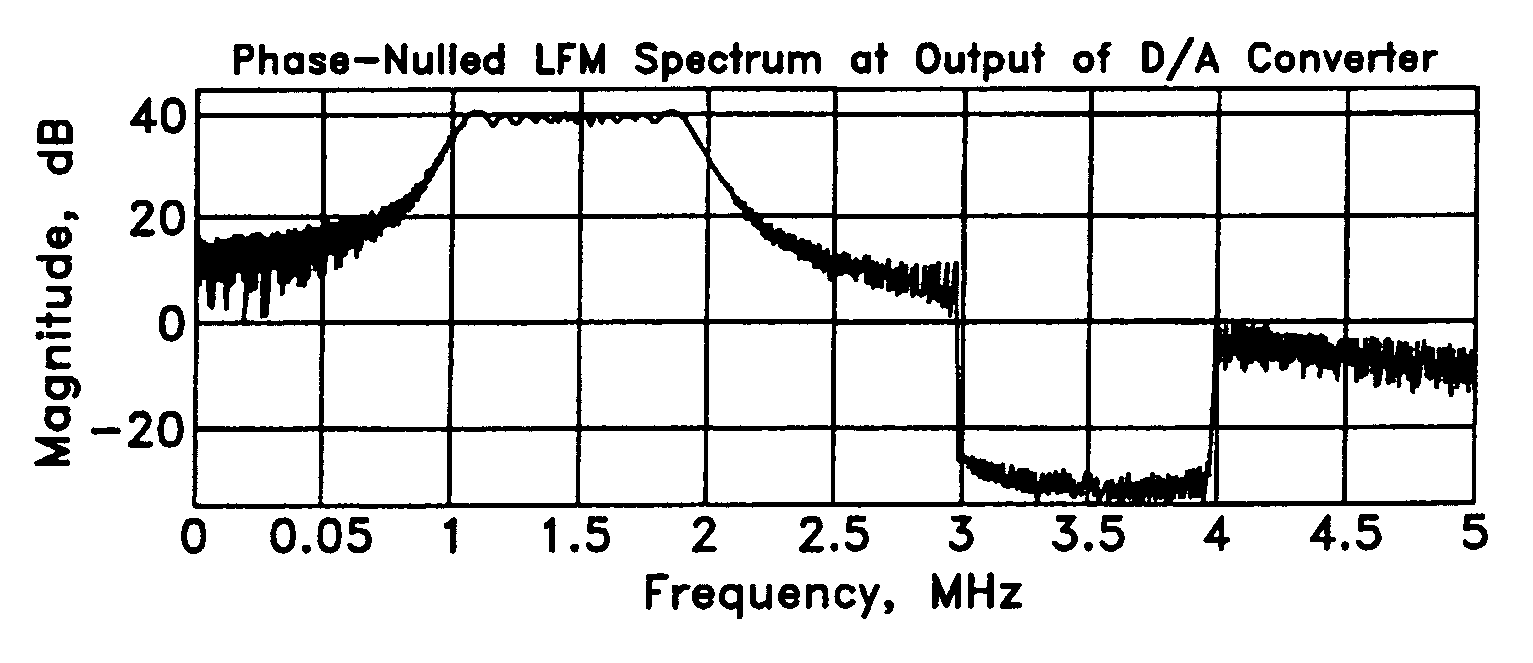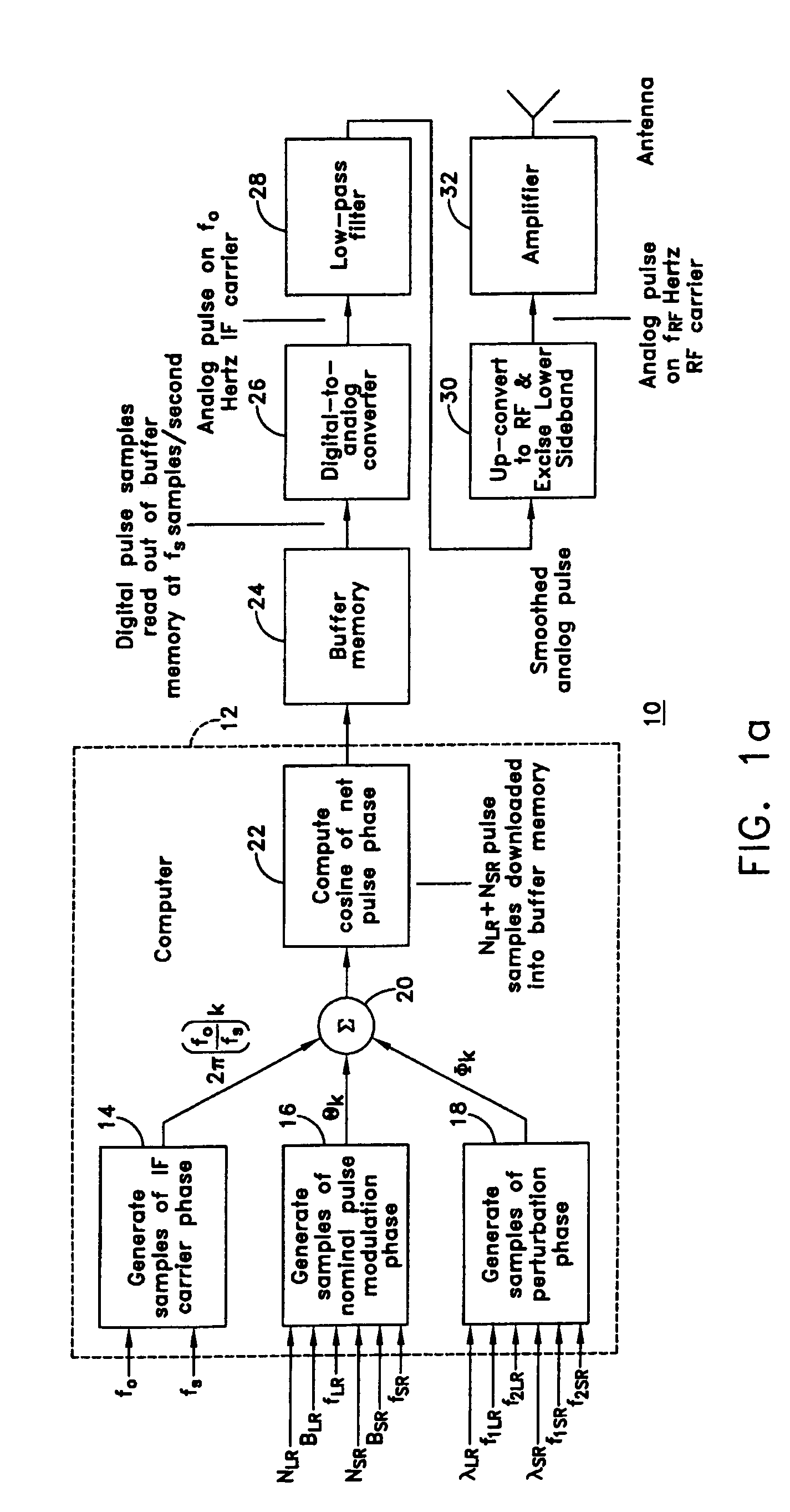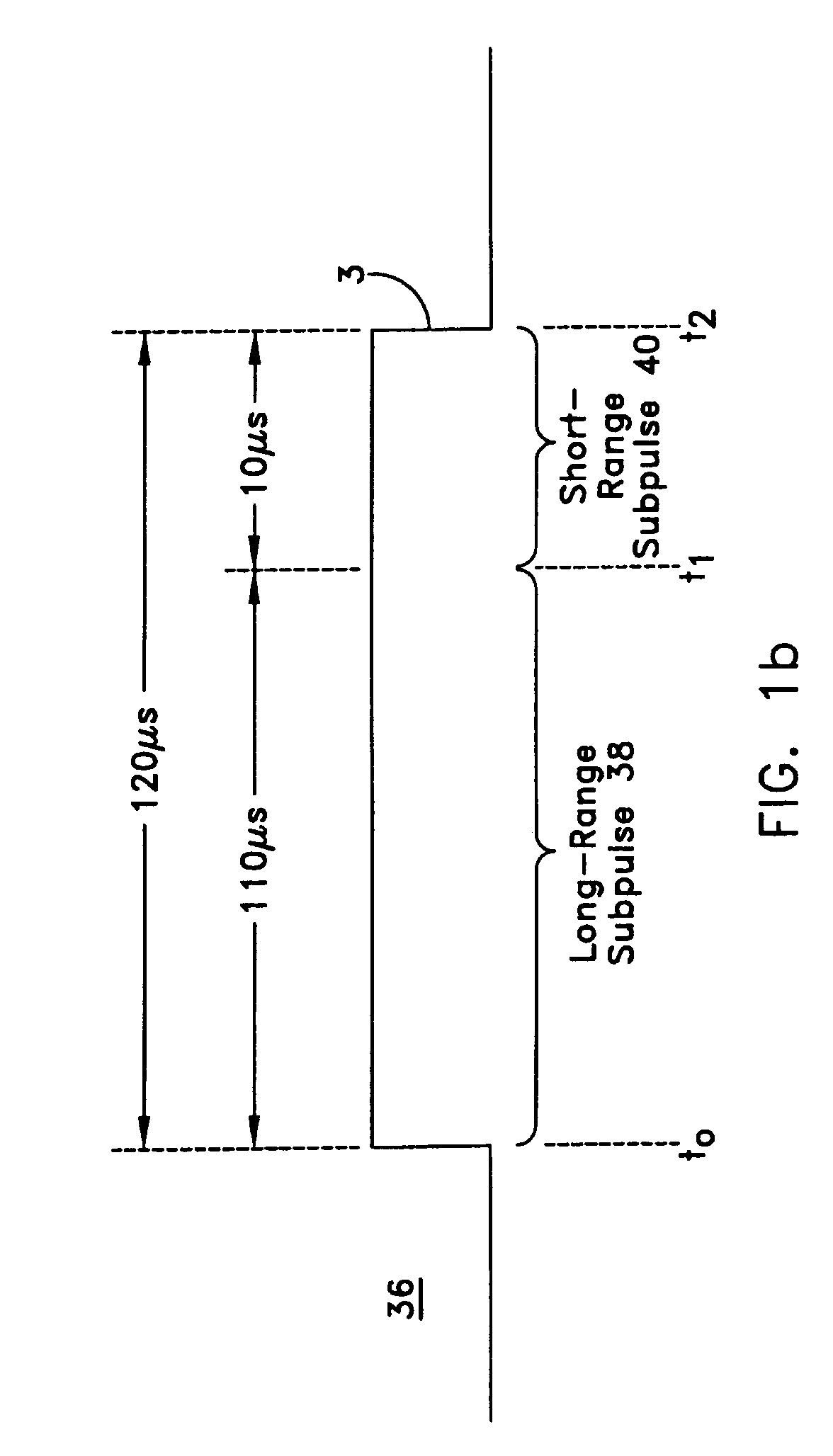Phased null radar
a phased null, radar technology, applied in the field of radar, can solve the problems of limited use of radar systems, interference with such equipment, and the receiver of radars, and achieve the effect of reducing the interference
- Summary
- Abstract
- Description
- Claims
- Application Information
AI Technical Summary
Benefits of technology
Problems solved by technology
Method used
Image
Examples
Embodiment Construction
[0026]In FIG. 1a, a portion 10 of a radar transmitter uses a computer 12 including a portion 14 to generate digital phase samples at a sample rate fs of constant-amplitude pulse with arbitrary intermediate frequency (IF) carrier frequency f0. The output signal of block 14 may be represented as 2π(f0 / fs)k, where k is the sample index, 0≦k≦(NLR+NSR−1) A portion 16 of computer 12 produces a nominal but arbitrary phase modulation function Θ from input information including NLR, NSR, the number of samples in the long- and short-range subpulses, respectively; BLR, BSR, the bandwidths of the long- and short-range pulses, respectively; and fLR, fSR, the center frequencies of the long- and short-range subpulses, respectively. The output signal of block 16 is designated Θk. Furthermore, computer 12 includes a generator 18 for a phase perturbation function Ø to exert fine control over the spectral response of the pulse, based on input information λLR, λSR, the null depth parameters for the lon...
PUM
 Login to View More
Login to View More Abstract
Description
Claims
Application Information
 Login to View More
Login to View More - R&D
- Intellectual Property
- Life Sciences
- Materials
- Tech Scout
- Unparalleled Data Quality
- Higher Quality Content
- 60% Fewer Hallucinations
Browse by: Latest US Patents, China's latest patents, Technical Efficacy Thesaurus, Application Domain, Technology Topic, Popular Technical Reports.
© 2025 PatSnap. All rights reserved.Legal|Privacy policy|Modern Slavery Act Transparency Statement|Sitemap|About US| Contact US: help@patsnap.com



